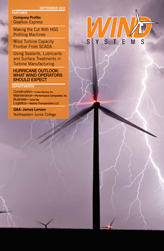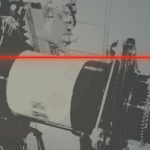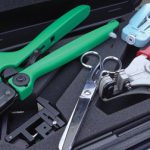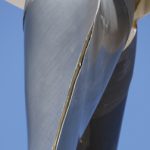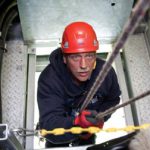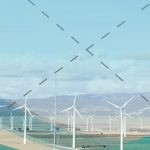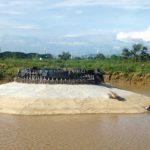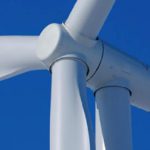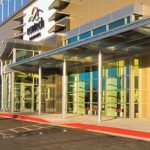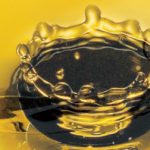Silent behemoths supporting 60-meter blades that rotate at up to 300 km/h, industrial wind turbines are modern engineering miracles. These sentinels of electric power stand up to 152 meters tall and must withstand decades of harsh environmental conditions found offshore, in coastal regions and on mountaintops.
Industrial wind turbines cost roughly $1.2 to $2.6 million to build, and installation costs increase the average investment to approximately $3.5 million per turbine. Turbine manufacturers and owners are constantly looking for ways to reduce manufacturing and maintenance costs and increase profitability by shortening production cycles, increasing production volume, and simplifying maintenance requirements.
Adhesives, sealants, lubricants and surface treatments play critical roles in the life, health and financial soundness of wind turbines. These materials are used during every phase of manufacturing, installation and day-to-day operation.
Turbine Manufacturing and Assembly
For blade and nacelle production, gigantic molds are first treated with semi-permanent mold release agents that allow large-scale composite parts to be easily removed from the mold. Blade halves and nacelle body components are bonded together and sealed using structural adhesives such as two-part polyurethanes that prevent crack propagation, micro-cracking and fatigue, and ensure the long-term integrity of the structure. Two-part polyurethanes also fill voids found on the molded assemblies.
Two component polyurethane adhesives and MS polymer sealants are used to permanently bond components such as access doors, rain deflectors and gurney flaps to the blades. Color-matching, weather-resistant MS polymers and high performance sealants protect and seal the blade and nacelle interior and exterior from moisture and environmental contaminants.
When metal tower components are manufactured, surface treatments such as coatings, conversion coatings and cleaners/degreasers prepare the surface to improve corrosion resistance and paint adhesion. These large parts are then ready for assembly.
On the tower, sealants prevent moisture from penetrating in through tower section breaks and prevent corrosion on load support plates, platforms, bolt heads, ladder frames and other metal surfaces. Anaerobic threadlockers lock and seal large threaded fasteners. Structural adhesives are used to bond and secure ladders and other components.
Anaerobic adhesives play critical roles throughout the turbine assembly, locking and sealing threaded fasteners found on the base, tower, nacelle and blades. Anaerobic materials are widely used in hub, bearing and the gearbox assembly where they retain pitch and yaw bearings, and seal gearboxes, flanges and hydraulic fittings. Anti-seize lubricants protect power train splines, mounting bolts, and exposed fasteners.
Throughout the turbine, heavy duty solvent-based and aqueous cleaners remove dirt and residues from composite and metal parts and prepare them for installation and operation in the field.
During installation, epoxy grout materials are used to create a level, secure base for tower assembly. High strength epoxy grouts bond to steel, concrete and other construction materials and withstand high torque loads. Urethane sealants bond, seal and waterproof tower bases. Cables that route out of the turbine to deliver electricity must be sealed to stop moisture/water from entering the turbine, preventing corrosion. Highly flexible silane modified polymers demonstrate good adhesion to many substrates and create a soft, elastic seal. Figure 1
Turbine Maintenance
From the moment a turbine is assembled and begins to turn, it is exposed to environmental hazards. Lightning, turbulence, sand, rain, hail, snow and bird-strikes all contribute to wear and damage to the blades and nacelle. Corrosion affects the aesthetics and eventually compromises the strength of the tower, while erosion damages the concrete foundation, causing cracks, chips and spalling.
Composite blade tips commonly experience micro-cracking and structural cracking that can be significant and require installation of a new tip or a structural patch. Bird and lightning strikes can penetrate the blade and require repair to the core material, the blade substrate and the blade surface. Pitting and wear caused by weather and environmental elements can decrease the aerodynamics and efficiency of the wind turbine.
High viscosity, structural polyurethane putties are hand applied to the eroded edges of the blade. Fast-curing, abrasion-resistant putties fill large gaps and holes caused by lightning or bird strikes. Cartridge dispensed two component polyurethane adhesives patch damaged tips and fixture in just 75 minutes. To reduce the chance of subsequent lightning strikes, lightening diverter strips designed to transmit and ground lightning away from the blades, can be applied to blade surfaces using a structural adhesive. Working together, these adhesives and sealants return the blades to their original smooth and wind resistant design and allow the blades to rotate again with little downtime.
On and in the nacelle, sealants are used to protect the generator and motor housing, panels, hinges, service doors, man-holes and exterior appliances such as wind indicators, lights, rails or cable breakthroughs from moisture ingress and corrosion. Anaerobic materials protect yaw bearings and keep gearboxes operating efficiently and reliably. Anti-slip coatings create walking surfaces with good traction so that maintenance workers will not slip in cold, wet and icy conditions outside the nacelle or slippery, lubricant and coolant-coated surfaces inside the nacelle.
The tower assembly must be treated on an ongoing basis with maintenance chemicals to keep it strong and solid throughout the long life of the turbine. High flexibility adhesives and sealants ensure the tower sections stay together and seal out water and chemicals that can cause corrosion and enter the tower assembly. Chemically resistant coatings and galvanizing compounds protect the metal towers from corrosion and damage. Threadlocking and structural adhesives keep accessories such as ladders and platforms in place and prevent threaded fastener failure. Figure 2
To ensure that blades achieve maximum aerodynamic efficiency, they must be regularly cleaned of contaminations such as algae, dirt and sand. Water-based cleaners quickly cut through grime and reduce the effort and time required for cleaning. By applying specially formulated coatings, maintenance crews can reduce the likelihood of new contaminants sticking to the blades and can increase the turbine’s total power production until the next scheduled cleaning.
On the base of the turbine, damage and cracks in concrete pads will deteriorate over time from exposure to outside elements. Repairing damaged areas using crack fillers and fast-fixturing concrete repair products increases the life of the concrete structure and helps it resist future damage.
By incorporating adhesives, sealants and surface coatings from start to finish in wind turbine production, manufacturers can produce more robust turbine components and longer-lasting assemblies. Automated processes shorten production cycles, increase production volume and reduce manufacturing costs. And stronger, more reliable turbine components mean less maintenance when the turbine is assembled and in operation in the field.
During installation and maintenance, wind farms that use adhesives, sealants, lubricants, surface treatments and cleaners top to bottom on their turbines simplify and speed installation, minimize downtime and ensure a safer work environment for crews. The turbines are more efficient structures that operate more reliably and provide greater energy output over the expected lifespan, therefore the wind farm is more profitable and less manpower and money is dedicated to maintenance issues.



















